Last week, the mobile virtual network operator Ting launched a new service running over Verizon’s network. The day it launched, I went to Ting’s website to order a SIM card and begin trialing the service.
Ordering process
Initially, I ran into a bug during Ting’s checkout process that prevented me from finishing an order. I think this was a launch-day issue with Ting’s website. A few hours later, the bug seemed to be fixed, and I ordered a SIM card. I paid about $5 for the SIM, shipping, and taxes:
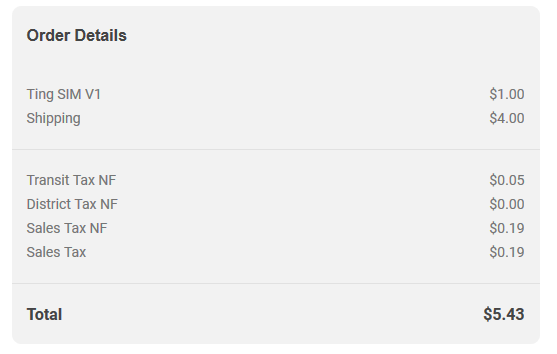
Activation process
Two days after placing my order, a SIM card arrived at my door. I popped it into a Moto G7 Play and went to Ting’s website to activate service. Activation wasn’t difficult, but it felt a bit clunky. Some of the information I had to provide when ordering the SIM card needed to be re-entered during the activation stage.
Once I’d finished the process on Ting’s website, I restarted my phone. The service worked immediately.
Service quality
Coverage has been great, as I expected from Verizon’s network. I’ve run speed tests under a variety of signal strengths, and the speeds have mostly been solid:
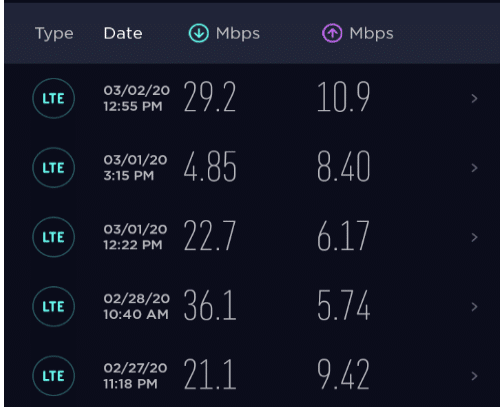
As expected, I didn’t notice any throttling of regular data speeds. However, it looks like most video traffic is throttled to a maximum of about 4Mbps:1
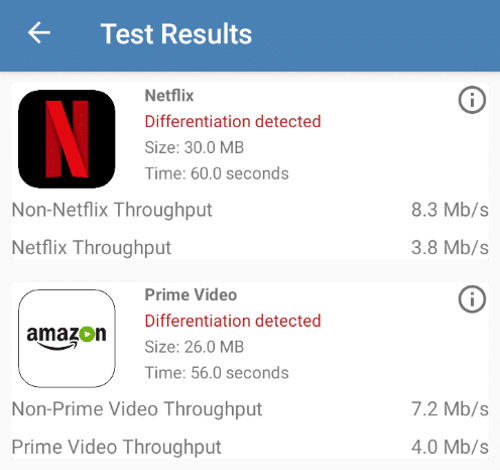
Possible low prioritization
I’m suspicious that Ting has low priority on Verizon’s network (despite some suggestions to the contrary).
Using the app Network Signal Guru, I found my data traffic to generally be associated with a QCI value of 9. I expect a QCI of 9 on Verizon’s network is indicative of low priority.
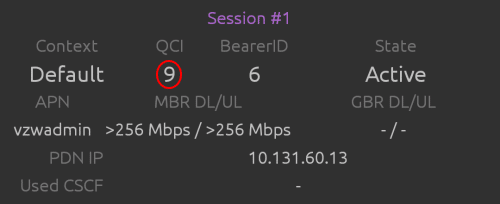
I also found low speeds in the downtown area of Boulder, Colorado despite having a strong signal:
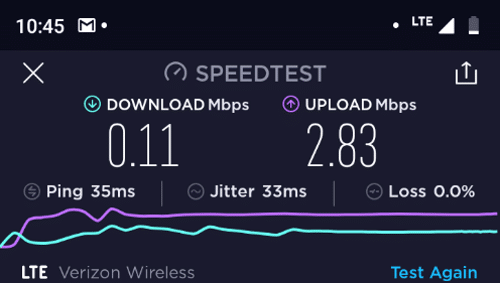
The most plausible explanation I can come up with for the lousy speeds is a combination of congestion and low priority.2
In most situations, low-priority service won’t cause subscribers much trouble. My best guess is that Ting users have the same priority level as Verizon’s prepaid customers, most Xfinity Mobile customers, and customers on Verizon’s cheapest post-paid unlimited plan.3 I reached out to Ting to see if the company could provide any additional information about prioritization. At the time of writing, I have not heard back.
Tentative view
So far, I’m a big fan of Ting’s new service: Ting offers way better coverage than it used to, Ting didn’t raise its prices, and the company continues to offer awesome customer support.
Downsides
Despite my generally positive view, I have a few quibbles about Ting’s new service:
- I don’t think Ting adequately discloses video throttling. I don’t remember any notifications about it during the ordering process. That said, I don’t think the video throttling is a big deal. It may actually help subscribers keep their data charges low.
- Ting’s coverage page states: “By piggybacking on America’s largest network, Ting makes sure you’re covered from coast-to-coast. Period.” This implies that subscribers will be covered by Verizon’s network. It would be more transparent for Ting to indicate that most, but not all, subscribers can access Verizon’s network. Further, Ting said this on its coverage page for a little while before the service over Verizon’s network even launched.
- Ting doesn’t allow subscribers to choose a network directly. Instead, potential subscribers provide information about their devices and where they live and are then matched with a network. I understand why Ting uses this approach for most website visitors. Many people would end up confused and choose networks poorly if they had to choose a network on their own. Still, I wish there was an option for knowledgeable users to explicitly sign up for Verizon’s network.4
- Wi-Fi calling doesn’t seem to be supported at this time.
Footnotes
- The screenshot comes from the app Wehe.
- Something else could be responsible. Ideally, I’d have run another test at the same time from a post-paid, high-priority Verizon plan so test results could be compared.
- With Verizon’s current offerings, the cheapest post-paid unlimited plan is the Start Unlimited plan. I expect users on other Verizon unlimited plans that go beyond their allotments of Premium Data will have the same priority level as Ting subscribers.
- Alternatively, Ting could offer a tool that allows users to check whether specific locations or devices are eligible for the Verizon service.

